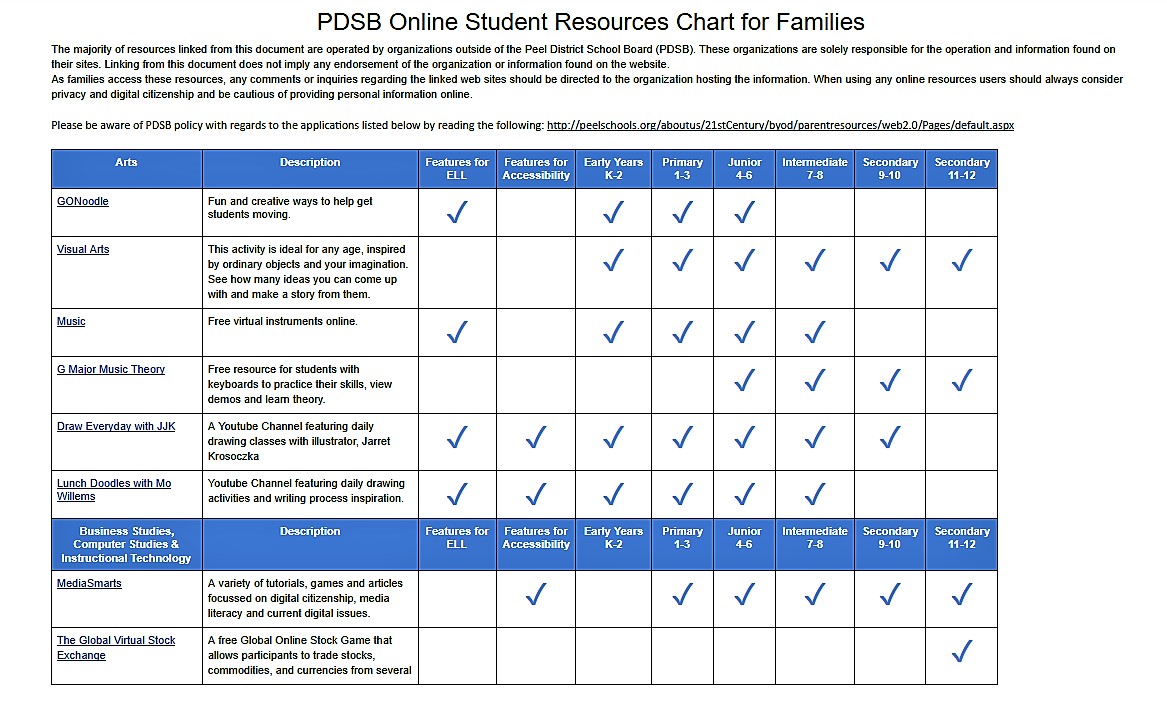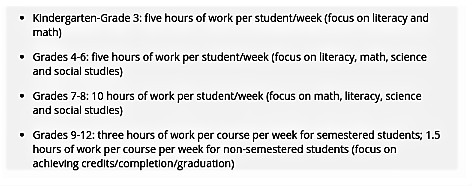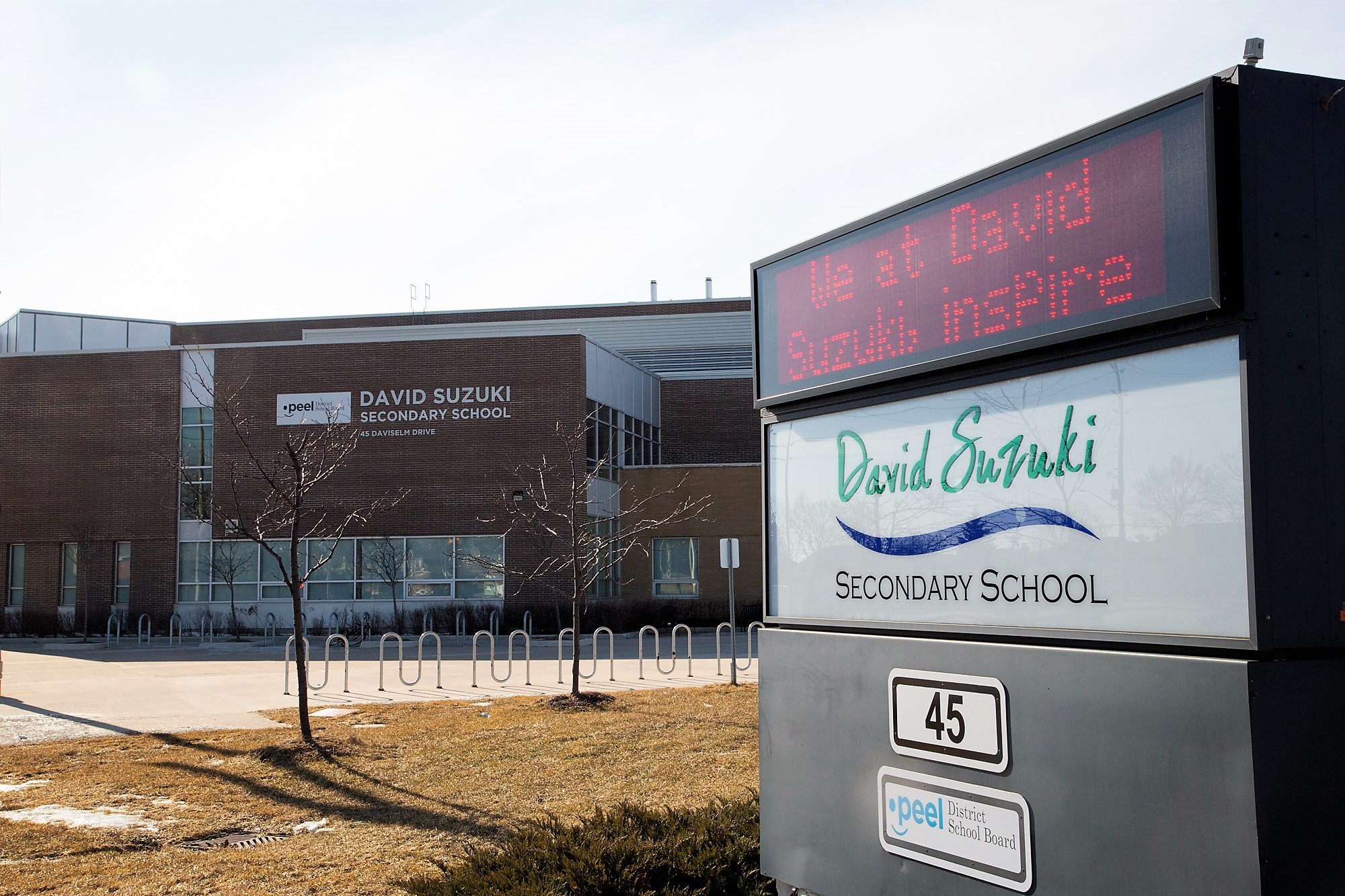
Teacher-led online learning to begin next week as Ford tells Ontario parents schools will remain closed at least till May
Ontario has announced it will extend the closure of public schools and daycare centres by a month as result of the COVID-19 pandemic. The inevitable announcement was made today by Education Minister Stephen Lecce and Premier Doug Ford, with schools previously earmarked to open next week, provisionally.
At the same event, the province revealed details of its online learning program, set to launch on April 6.
"The decision to extend school closures was not made lightly,” Ford said. “We know from the medical experts that the next two weeks will be critical in the fight against COVID-19 and that's why we're taking further action to keep our kids safe and healthy by having them stay home. At the same time, we cannot put the school year in jeopardy. That's why we're providing additional tools for at-home learning and ensuring students from kindergarten to Grade 12 to postsecondary education can finish their academic year and get the credits they need to graduate."

Premier Doug Ford and Education Minister Stephen Lecce
Public schools will now remain closed until at least May 1 for teachers and May 4 for students, with the date set to be re-evaluated nearer to the time. Schools in the province have been closed since March 13 for the March Break, which was originally extended to April 6.
During that shutdown, the number of COVID-19 infections has continued to grow in Ontario. Today alone, the Region of Peel announced 61 new positive cases and the death of a Brampton man in his 70s, while Credit Valley Hospital in Mississauga had to declare an outbreak Tuesday after four patients in the same unit tested positive for the novel coronavirus.
Despite the pandemic and extended closures of education centres, some school boards have not been particularly proactive. On Mar. 20 The Pointer reported that Peel District School Board (PDSB) was not working on alternative education options for students during the shutdown, while tentative plans and online options were already being prepared by the Dufferin Peel Catholic District School Board (DPCDSB).
At the time, Carla Pereira, director of communications for PDSB, said teachers were not expected to “provide instruction or assessment” until at least April 6. “Our understanding is that the ministry was working on resources that students could access independently for self-directed learning during these two weeks,” she said.
A week and a half later, with children and parents stuck at home, the resources available from the two school boards serving Mississauga and Brampton are minimal, with many parents wondering what Tuesday’s promise for more online tools will look like.
On social media there have been posts by Ontario residents questioning the approach of teachers regarding online learning and questions about what they are doing while students are at home, forced to scramble for learning options.
Some have pointed out that teachers in other places have been actively using virtual options to continue teaching students directly.

On the public portions of both Peel school board websites, there does not appear to be any directed learning. Instead both PDSB and DPCDSB have a list of links to various online education platforms, including a YouTube channel with videos teaching viewers how to paint and draw.

The province’s announcement, the second phase of Learn at Home, signals a shift away from this voluntary online learning directed by families. For the most part, school boards and educators appear to be flagging resources instead of creating online lessons, teaching using a variety of online tools and platforms (many of which are used commonly in other education jurisdictions) and assessing. The new model, announced Tuesday and similar to that used by universities, will be more tailored and aims to create a digital classroom.
Among the things that signal this shift is the announcement of report cards for all years. Students from Kindergarten to Grade 12 will receive reports and assessments, with a guarantee from Minister Lecce to Grade 11 and 12 students that “we have your back” for on-time graduations.

Many high school students are concerned about the implications for post-secondary education
“We’re taking the next steps to provide continued learning for our children by unveiling a new teacher-led program that will keep children learning while at home,” Lecce told reporters. “The second phase of Learn at Home creates some predictability for our parents, our students and our education.”
Children will be given varying levels of work based on their age. Kindergarten to Grade 3 will receive five hours of work every week focusing on literacy and math, while Grades 4 to 6 will have the same amount of study also incorporating science and social studies. Grades 7 to 8 will receive 10 hours of work per week, with Grades 9 to 12 getting three hours per course per week for students in the semester system.

Until now, the province had been relying on more general online materials and services such as TVO to educate children in a less prescriptive manner.
The focus of the new system will be working to create an online learning experience similar to the classroom with teachers interacting with their classes and students submitting work to be graded. “I know nothing about this situation is ideal and I recognize, we recognize, the difficulty that parents will face as we go forward,” Lecce added. “This pandemic has made the case so clear: we must come together, harness our collective energy and put our efforts forward to improve the situation of every child.”
In order for teachers of all ages and technological literacies to be able to effectively lead their classes online, the province is also setting up tools to educate teachers on how to use the system.
In Peel, there are some barriers to learning at home that school boards and the province are working to address. In a region where 52 percent of neighbourhoods were categorized as low-income in 2015, not all students have the same access to technology. For mass online learning, this could mean those same students see their education suffer. To address this, PDSB and DPCDSB are working with the province to distribute laptops and learning devices to all students who do not currently have access.
The plans centre around online learning, but do not rule out telephone teaching or printed materials if they are required.
The online learning curriculum, delivered through Learn at Home, will officially begin on April 6, the day schools were supposed to go back after the initial closure. It means that most children in Ontario will have missed two weeks of education as a result of the pandemic, with just a minority of teachers actively leading online classes during the extended shut-down.

If the rise of COVID-19 is not under control by May 4, the new date schools are optimistically slated to re-open, the province has said it will review its decision. This could take the form of another extension or the suspension of in-person schooling for the rest of the academic year.
“The bottom line is we’re trying to be iterative to respond to the challenges on the ground of COVID-19,” Lecce said. “It allows us to give some sense of hope to parents and to students that if the school year could be salvaged, if in-class instruction can be salvaged in a safe manner, we’ll do it. But if it is not possible, if it is not feasible or safe, we’ll continue to extend it or at that point [May 4] cancel it outright.”
Email: [email protected]
Twitter: @isaaccallan
Tel: 647-561-4879
Submit a correction about this story


